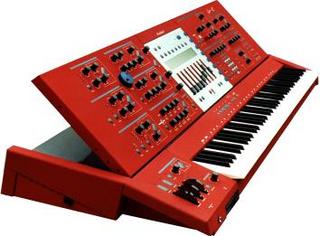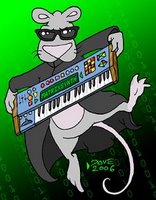MONTAGE Development Story
Published on Jan 21, 2016 yamahacorporation
Update: Two new videos from Kraft Music added under the press release below.
Showing posts sorted by relevance for query Sound Department. Sort by date Show all posts
Showing posts sorted by relevance for query Sound Department. Sort by date Show all posts
Thursday, January 21, 2016
Thursday, July 19, 2018
Arturia Officially Announces DrumBrute Impact
Published on Jul 19, 2018 Arturia
"Packing 10 beefy high-impact sounds, a unique "Color" layer, output distortion, and probably the best step sequencer on the planet. Say hello to DrumBrute Impact; your new go-to drum machine."
You might have caught the DrumBrute Impact demo posted yesterday afternoon here. The official videos, press release, and a few more user videos are in and captured here.
DrumBrute Impact Tutorials
Playlist:
DrumBrute Impact Introduction Tutorials: Episode 1 - Sounds and Steps
DrumBrute Impact Introduction Tutorials: Episode 2 - Color and Distortion
DrumBrute Impact Introduction Tutorials: Episode 3 - Adding Feeling
DrumBrute Impact: Users & Press
Playlist:
Arturia Drumbrute Impact Live Jam - LOOK MUM NO COMPUTER
Arturia DrumBrute Impact - Rick Feds
New DrumBrute Impact Review and Full Sound Test - loopop
DRUMBRUTE IMPACT REVIEW & SOUND DEMO - BoBeats
Dualtrx - Live Sessions // 20 (Arturia Drumbrute Impact, Minibrute 2S and 0-Coast)
Arturia-DrumBrute Impact first sound pattern and new color mode - Dziam Bass
DRUMBRUTE IMPACT VS ORIGINAL DRUMBRUTE - Side by side comparison & sound demo - BoBeats
"Analog pioneers Arturia are set to release DrumBrute Impact, an exciting new hardware drum machine that combines raw, energetic sounds, advanced sequencing, and fast, fun workflow into an addictive little powerhouse you won’t want to put down.
 The newest member of the “Brute” analog hardware family, DrumBrute Impact really lives up to the name. Featuring attitude-packed, tweakable analog drums sounds, an all-new “Color” layer, output distortion, and arguably the best sequencer on the planet, DrumBrute Impact promises to redefine the way you create rhythm, drums, and percussion, both in the studio and on stage.
The newest member of the “Brute” analog hardware family, DrumBrute Impact really lives up to the name. Featuring attitude-packed, tweakable analog drums sounds, an all-new “Color” layer, output distortion, and arguably the best sequencer on the planet, DrumBrute Impact promises to redefine the way you create rhythm, drums, and percussion, both in the studio and on stage. In the sound department, DrumBrute Impact features 10 fantastic sounds accessible through 8 responsive performance pads:
In the sound department, DrumBrute Impact features 10 fantastic sounds accessible through 8 responsive performance pads:KICK : pounding bass drum with nice attack transients and variable pitch and decay. protocol.
SNARE 1 : a big-bodied snare with great, editable snap and decay.
SNARE 2 : a trashy snare with a hint of clap, with adjustable tone and decay.
TOM HIGH : simple but powerful high tom with sweepable pitch.
TOM LOW : pants-shaking low tom that can get so low you could use it as a 2nd kick.
CYMBAL : zingy, metallic crash with adjustable decay.
COWBELL : a simple but effective percussive cowbell.
CLOSED HAT : hard-hitting hat with variable tone that also effects the Open Hat.
OPEN HAT : open up the hat sound with changeable decay with a mute controlled by the Closed Hat.
FM DRUM : a percussive synth voice with adjustable carrier pitch, decay, FM amount, and mod pitch.
These sounds have been carefully crafted by Arturia’s sound designers to not only sound exciting and visceral, but to also create a cohesive “kit” sound that truly gives DrumBrute Impact a unique, inspiring voice.
Saturday, November 22, 2014
The Room of Sound
The Room of Sound from musi_arch santacecilia_sapienza on Vimeo.
"From March 5 to 20, 1977, in the Rome National Gallery of Modern Art was held from the 14th Festival of Nuova Consonanza, an association of musicians and composers congregated around Franco Evangelisti, responsible for the practical organisation of the Festival was Vittorio Consoli, engineer, music lover and enthusiastic investigator of the relations between space and sound. For 15 days in the main concourse of the National Gallery, experimental studies were made on the interaction between space and music and between musicians and computer, using compositions by, among others, Mauro Bortolotti, Domenico Guàccero, Aldo Clementi, Franco Evangelisti, Luigi Nono, Alessandro Sbordoni, Edgard Varèse, Leo Küpper and Giorgio Nottoli. The concourse of the Gallery is an exceptionally reflective space, totally non-musical. A huge acoustic dome made up of 100 loudspeakers, fed by the same number of audio channels, was created by Vittorio Consoli, with invaluable assistance from Leo Küpper, and wrapped up in a cloud of coloured aerostatic balloons, which were not fully inflated, and which gave the hall the acoustic properties required and also lent to the event an extraordinary sense of festivity surrounding the musical experimentation; this spirit can perhaps still be seen in the old black and white photos of the event and is still visible in the image we have of the main protagonists – Franco Evangelisti, Leo Küpper and Vittorio Consoli. Given the date, this was no virtual experiment in spatialisation, but a real-time musical event: the sounds, generated by an impressive analog computer, could be transmitted towards each of the loudspeakers and switched from one to another by a hand-made mixer. The most famous precedent for all this was, of course, the Philips Pavilion at the 1958 Brussels Expo, the masterpiece of Le Corbusier and Xenakis, animated by the Poème Electronique of Edgard Varèse. However, the most striking precedent was without a doubt the musical sphere constructed for the 1970 Osaka Expo by Karlheinz Stockhausen. Here the composer established the iconic quality of contemporary absolute music, an icon which subsequently symbolically adorned his grave monument. The project we are presenting here, the Stanza del Suono (Room of Sound) can be seen therefore to follow the path of a great contemporary music tradition; today we can avail ourselves of the innovations of computer technology, which allow us to organise the emissions of sound in space in a genuinely contrapuntal fashion, as Vittorio Consoli would say. The spatial evolution of the sounds thus becomes part of the decisions that the composer arranges within his creative system, to quote Schumann. The musical scores are able to not only specify precisely the limitless paths through space traced by the sounds, but also to envisage the ‘unknowns’ involved in the immediate, real-time interaction between sound and space, and between the musicians and the computer program. In this way, this new project of ours is not merely a place for listening to music, but also a place for creating and processing music in a continuous interplay between, space, music, sound, musicians and audience. The project aims at producing a new, long-term, functional acoustic and spatial device that can be employed by all
those engaged in electro-acoustic music research. It was built upon a body of work consistently carried out at the Conservatory of Santa Cecilia in Rome, in its Department of Electronic Music, up till now directed by Giorgio Nottoli, and is the result of a close collaboration with two Departments of Rome Sapienza University: the Department of Architecture and Design, under Piero Ostilio Rossi, and the Department of Architectural History, Design and Restoration, directed by Paolo Fiore. The idea of setting up a permanent cooperative research area between musicians and architects, on the theme of ‘Music and Architecture’, and of including it in the agenda of Emufest, the International Festival of Electro-acoustic Music, originated in 2011 in the insights and enthusiasms of composer Fabio Cifariello Ciardi and architect Luca Ribichini...[...]"
via Francesco Synth Meeting Mulassano on The MATRIXSYNTH Lounge
Tuesday, August 13, 2019
New Analog Mafia RC-808 from Roland's "Mid-O Series" Developers and the "Failed" Roland TR-808
Published on Aug 8, 2019 藤本健
Update: demo above spotted and sent in via Soviet Space Child.
This post is a bit of a doozy so bear with me. :)
First we have a new software model of the TR-808 from the original developers of the 808:
"The RC-808 'Re-Create the 808' emulates the original TR-808 sound with analog manner synthesis. As the name implies, it is with respect to the original 808 sounds which is a criterion for sound synthesis as a vintage. Starting from this criterion, explore the multiverse of sounds, stretch out your vectors, to find out new criterion of your own. Yes, it can take you to the new sonic worlds that are completely different and yet so close and familiar to you.
Hence it is not a drum machine but is a drum synthesizer. No samples nor effects processing are being used, just genuine synthesis only, all in analog manner.
The sound source employs DCO which is in this case Down Chirp Oscillator, combined with a noise source that outputs various kinds of noises including metallic noises. There is also a infinite point wave shaper, a variable filter bank, infinite point envelope generators etc. With maximum 8 partials per voice, it allows sound designing in subtractive synthesis manner which is familiar to all and yet still with vast space beckoning to be discovered.
Thanks to this flexible architecture, all instruments can have Open and Close variations just like Hi-Hats or cymbal choke performance. Coupled with piano-roll sequencer utility this brings new expressions with gate time programming, that you don’t see on a drum sequencer..."
You can download the Windows version here. A Mac version is coming.
Second, the following is some info on the people behind the RC-808 (pictured above) via Vector808:
"We the Analog Mafia, lead by Tadao Kikumoto, is the original R&D staffs who developed the Mid-O Series from Roland Corporation. We would like to express full gratitude and respect to all the people who were in Roland, and supported us at that time.
In above photo, from left to right, we the Analog Mafia are:
Jun-ichi Kadoya: Roland 1977 - 1983, Mid-O Series software / hardware engineer, still is a programmer
Hisanori Matsuoka: Roland 1979 - 1995, Mid-O Series software / hardware engineer, still is an engineer
Kyokazu Fujiwara: Roland 1978 - 1981, Mid-O Series sound source, now a general manager of a software maker
Tadao Kikumoto: Roland 1977 - 2009, Mid-O and V-Series R&D, now Silent Street Music concept maker and promotion
Yoshiro O-e: Roland 1978 - 1988, System-700 and Mid-O Series R&D, now operating a chemical company
Also are:
Hiro Nakamura: Roland 1975 - 2000, CR-68, CR-78, TR-808 sound sources, engineer
Atsushi Hoshiai: Roland 1982 - present, sampling for TR-909, engineer
We all are still analog manias ;)
Because we are independent from Roland Corporation, they nor we can not answer to any kind of inquiries about us and our deliverables including this website. Thank you so much for your understanding and cooperation for everything.
Tadao Kikumoto is currently also working busy on another equally innovative project, called SSM - Silent Street Music. It is multi-channel concurrent streaming and listening technology that allows zapping through multiple music or lecture sources instantly. Join us on its exclusive introduction website (at the moment the website is only in Japanese language)"
Third, vector808 has a fascinating historical account covering the development of the Roland TR-808 starting with the x0x series, or as the original Roland developers referred to them, "The Mid-O" series. The following are three excerpts followed by a link to the full article. Note how they perceived the TR-808 was a failure compared to the LinnDrum in the second excerpt.
One:
"The Beginning
In 1983, a number of instruments were released with MIDI, the standard that I was involved in. After the tough times with all the difficulties of development, Roland launched the TR-909 the successor model of TR-808. Yamaha made debut of the ground breaking DX7, a serious digital synthesizer and again with MIDI. It was the opening of the new chapter in the electronic musical instruments, the dawn of full digital synthesis.
Roland then was still a new emerging enterprise, and did not have enough resources to pursue digital technology. To combat the situation, the Fundamental Research and Development Department was established."
Two:
"To meet the low target price, I employed oscillation technique of pulse wave modulating the simple T-network bandpass filter. By short circuiting the resistors in the T-type network for the certain initial duration with transistors, it was possible to raise the frequency. This allowed us to enforce the attack sound compared with conventional rhythm boxes.
But the initial reputation of the 808 was nothing but crippled as it was compared with the Linn products. Furthermore, the sound had insufficient impact or punch at the beginning, which resulted to have pronounced fundamental frequency 60 Hz. But then again, it was this prominent fundamental which attracted the attention of later time hip-hop and EDM artists, and they gave a name to it as “Deep Decay”. This led to the rediscovery of Mid-O Series. The long decay sound was made possible by decay parameter that I added to show at least as a sign or as an evidence of the 808 being a synthesizer. Even inside the company this was regarded as going too far, but later it became one of vital identities of the 808.“
Three:
"If you liken it in the picture art world, the TR-808 sounds are simple line drawings and illustrations so to speak. It puts more weight on showing essence simply rather than realistic photography. The traditional painting of Japan known as Ukiyo-e is a pictorial method and manner that is primarily made of outlines derived from specification of printing and paints. This manner has its own limits, and hence is a vector of criterion. Katsushika-Hokusai, famous for his Mr Fuji pictures, created The Great Wave off Kanagawa(神奈川南沖浪浦 Kanagawa Minami Oki Nami Ura). In that piece of work, he threw off the photographic details into abstraction that boldly enhanced the great waves by outlines, and made contrast with a pointed Mt Fuji. This manner derived from its own limits is something impossible with realistic paintings that put priorities on details.
The inventor of the bass drum must have done trial and errors like enlarging the diameter or making the membrane thicker to produce fat low sound. Large portion of the beater strike energy to the skin however must have been consumed by uneven fractional vibration or parasite vibrations, resulting unwanted muddy sound. Also, the drummer spends a long time doing a lot of work on damping with blankets and else in order to suppress the unnecessary resonance with the body or with other drums. But once adequately used, this dirt will become important part of the sound, its identity, reality, and criterion.
The TR-808 bass drum was without the reality of the drums but was like an enhanced great wave depicted in the Hokusai’s picture. It is with abstraction of the details, but then again, also with dynamic and ideal low sound. It lacks with the attack impact and the release decay of sampling drum reality, but the artists chose its ideality."
You can find the full article here: https://vector808.jimdofree.com/home/episodes-of-the-mid-o-series/.
P.S. Not sure if the brand is Analog Mafia, vector808 or both. Giving this post both labels below.
LABELS/MORE:
Analog Mafia,
exclusive,
exclusive2019,
New,
New in 2019,
New Makers,
New Makers in 2019,
New Soft Synths,
New Soft Synths in 2019,
Roland,
Updates,
vector808
Tuesday, May 07, 2019
The Division Department 01/IV ANALOG DRUM SYNTH
The first batch of the new 01/IV ANALOG DRUM SYNTH will be limited to a run of 50.
"01/IV by The Division Department is a 4-channel analog drum synthesizer capable of synthesizing a wide palette of sounds. From usual drum hits like kicks, toms, snares, claps, hi-hats and cymbals to unusual and complex sounds like drones and weird modulated creations. The provided MIDI implementation lets the 01/IV be triggered via MIDI, which makes it a powerful piece of equipment in a setup.
−
The concept of 01/IV is unique as it has four identical voice channels with all the power of synthesizing various type of drum sounds. Any channel can play a kick, a cymbal, toms and congas, or even a bassline. Channels can even be combined, can modulate each others in pairs (FM) or can be layered to form complex sounds. All these achieved with a flexible routing system composed of slide switches and carefully calibrated synthesizer elements.
−
01/IV inherited genes from legendary drum machines and drum synthesizers like the Pollard Syndrum, the Roland 808 & 909, and Pearl Syncussion SY-1. It has a true analog audio path, but also added a very flexible digital modulation system of a multi-function LFO, ramp and retrigger generator.
−
Key Features:
60 panel controls: Knobs - Switches - Triggers Buttons
4 Voices - Chromatic via midi
Drone Mode
Midi note triggers and partial Midi CC controls
Mix / Individual outputs
Compact size / Light weight
Some details captured from The Division Department website for the archives follow. See The Division Dapartment label for additional posts.
Thursday, September 25, 2014
The Digelius DIMI Music Instrument, Computer, Synthesizer, Studio, Rabbit
Brochure scan in via Brian Kehew. This is the first time Digelius has been featured here on MATRIXSYNTH. The following is the description from the scan followed by some info on the man behind Digelius, Erkki Kurenniemi.
“DIMI IS A MUSIC INSTRUMENT. DIMI IS A COMPUTER. DIMI IS A SYNTHESIZER. DIMI IS A MINIATURE ELECTRONIC MUSIC STUDIO. DIMI IS A RABBIT.
The essential part of the digital instrument DIMI is an integrated circuit memory which is capable of storing an almost endless variety of musical structures.
The digitally controlled sound generators can be operated either by manual instructions from the keyboard or by instructions stored in the memory.
Any manual instruction can be recorded into the memory by touching the R-key. The selective erase function permits flexible editing of the stored program.
The interplay between manual and stored instructions results in a music instrument with possibilities not surmised earlier.
* MOS integrated circuit content addressable memory, 100 words 16 bits each.
* two sound generators, eight octaves chromatic scale
* vibrato unit, amplitude variable in eight steps and several frequencies
* two external general purpose inputs
* two selectors for eight sound sources
* two attenuators, seven steps six decibels each and off
* two banks of eight octave band pass filters
* three modulators
* rhythm generator, 48 different durations or tempi
* all parameters are digitally controlled and thus programmable
* contains about 250 integrated circuits
* dimentions 40x40x15 cm
* price 15 300 Fmk (about 3750 US$)
Digelius Electronics Finland Oy
Huvilakatu 24
Helsinki 15
Finland”
Some info on Erkki Kurenniemi via Wikipedia:
"Erkki Kurenniemi (born July 10, 1941 in Hämeenlinna, Finland) is a Finnish designer, philosopher and artist, best known for his electronic music compositions and the electronic instruments he has designed. He is considered one of the leading early pioneers of electronic music in Finland. Kurenniemi is also a science populariser, a futurologist, a pioneer of media culture, and an experimental film-maker.
Kurenniemi completed the majority of his instruments, electronic compositions and experimental films in the 1960s and 1970s. Between 1962 and 1974, he designed and constructed ten electronic instruments and studio devices when he was working as a volunteer assistant at the Department of Musicology at the University of Helsinki, and as designer at Digelius Electronics Finland Oy, founded in 1970. In addition to the Musicology Department, Kurenniemi also worked as assistant and senior designer at the Department of Theoretical Physics from 1962 to 1973. Kurenniemi earned a Bachelor of Sciences degree in 1968.
He subsequently worked as a designer of control systems for industrial robots at Oy W. Rosenlew Ab (1976–1978), and as a designer of industrial automation and robotic systems at Nokia’s cable machinery division (1980–1986). He also worked as a specialist consultant and Head of Planning at the Science Centre Heureka in Vantaa, Finland (1987–1998).
Kurenniemi received the Finland Prize of the Ministry of Education and Culture in 2003.[1] In 2004, he was elected honorary fellow of the University of Art and Design Helsinki.[2] 2011 Kurenniemi received Order of the Lion of Finland medal from The President of Finland Mrs. Tarja Halonen."
Update via Unknown in the comments: There's an article on Erkki Kurenniemi in the September 2013 issue of Sound on Sound (available online here). Definitely worth checking out.
Pictured: "Erkki Kurenniemi's first instrument was the Integrated Synthesizer. Completed in 1967, it used pin-matrix programming on a huge scale."
Tuesday, March 31, 2009
Musikmesse: New Jomox MBase II

"MBase01++ ?
yes, it was about time for mark II...
Analog Bass Drum Module
Available May 2009!
The MBase11 can do only one thing, but it does it right:
Phat kick drums!
And it does this even better than in the past.
The MBase11 is the logical follower of the MBase01 and offers even better performance, more versatility and an even phatter sound!
It generates analog bass drums, from extremely powerful to soft and covers the whole range from 909-style to 808-fashioned. And much more...the LFO has 8 different waveforms including true sine that can be used to create very different envelopes. The resulting sounds are not simply *kicks*...this turns out to be a bass drum *synthesizer*.
Like the XBASE 999/888, the MBase11 has a compression parameter to vary the thickness of decaying sound.
And...it offers a variable gate time to to create very different sounding attacks.
And...it also has a metalize parameter to have hundreds of variations on the attack noise.
For more intuitive editing, we have added an analog potentiometer that works alternatively to the parameter editing when scrolling the data wheel is too hard.
The MBase11 purposefully sounds a bit different to the XBASE 999/888, making it a great sounding expansion for our other drum products and other analog percussion.
The kick sets in very precisely and the attack sounds very snappy at all kinds of sound variations.
The MBase11 can also be used as a real bass with some limitations. If decay is cranked up it is long enough for tones and the pitch can be played on the keyboard in semitones over three octaves.
The kick drum can be triggered by an external analog trigger input. This is especially useful for live drummers who want to thicken up their live drum kit. The trigger input works with regular piezo pickups or audio signals.
Last but not least: one of the most convincing arguments for the MBase11 is the price: This is an inexpensive tool that helps you to create great kick sounds, without the timeconsuming searching accociated with mostly not satisfying samples. You save time and energy while reaching the sound quality you always imagined...
Tweak the sound you need. Everything is REAL.
Bass Drum
Although the MBase11 uses almost the same principle or block schematic for analog sound production as the XBASE999/888, the technology is different and results in a slightly different sound.
Tune Varies the pitch envelope of the VCO
Pitch Basses as low as 10Hz reach up to 175Hz
Decay Up to 2 sec
Harmonics Enrichment of harmonics of the VCO - for the hardest kick drums on planet earth
Pulse Change of the pure pulse part of the attack - gate time affects this parameter also
Noise Change of the pure noise part of the attack - gate time affects this parameter also
Attack Level of the mixing of Pulse and Attack
EQ Filters the bass drum with a low pass filter - for soft and 808ish kick drums
Gate Varies the gate time from 0.1ms to 16ms
Compr Compression of decaying envelope - for slim and clicky kicks and all the depth that is needed
MetNze Metalized noise. A complex digital multitone pattern of 255 different combinations feeds the attack noise
Midi
The midi controllers of the MBase11 are identical to the XB09/X999/X888/AB/JB. All parameters including LFO can be remotely controlled by midi. The MBase11 is also compatible with our midi editors and templates in the bass drum department.
LFO
The MBase11 has an LFO that works on the pitch of the bass drum.
The LFO speed can be edited in BPM or be syncronized by midi clock. As on the XB09/X999/X888/AB/JB, the LFO can be synced by a note trigger or might run free.
Another feature is: we have implemented a one-shot LFO function that serves as an additional envelope.
The wave forms are:
saw up, saw down, sine+/-, triangle+/- and rectangle+/-.
Specifications
Instrument Bass Drum
Presets 110 (10 User RAM, 100 FLASH)
Sound Engine Fully analog with storeable parameters
Envelopes Analog
LFO 8 waveforms: Saw +/-, Sine +/-, Tri +/-, Rect +/-, modulates the pitch, midi syncroniseable
Display LED 7-segment 3 digit
Midi Midi In, Midi Out
User interface 1 data wheel, 1 potentiometer, 5 buttons, 16 LEDs for parameters and functions
Outputs 1 mono out 1/4" RCA jack
Output Level About 0dBu
Input External analog trigger, sensivity adjustable
Supply External wall wart 9V DC
Weight About 0.5 kg, 1.1lbs.
Size 145x155x35mm"
"Musik Messe Frankfurt Hall 5.1 Booth B68 Table 6 "Superbude" http://www.superbooth.com/plan.htm"
Click here for samples and manuals on the MBase II product page.
Above details saved for the archives. This one in via xonox.
Friday, December 16, 2011
JoMox xBase 999
 via this auction
via this auction"Manufacturer Description:
The MBase11 can do only one thing, but it does it right:
Phat kick drums!
And it does this even better than in the past.
The MBase11 is the logical follower of the MBase01 and offers even better performance, more versatility and an even phatter sound!
Saturday, April 26, 2008
Kawai R100

images via this auction
"1985 Kawai R100 drum machine. Forget about the Roland TR 707 or the Oberheim DMX, the Kawai dominates over these machines for several reasons. First and foremost, THE SOUND! This box has the absolute deepest digital 12 bit kicks, toms, and snares I have heard in a drum machine. The sound is very deep and ranges from chesty, impact hits to aggressive and biting high's in the hi hat and cymbal department. Aggressive is probably the best word to describe the overall sound and feel of this machine. And if you are a fan of industrial music look no further. This is the EXACT sound of Ministry, KMFDM, and pretty much the bulk of Wax Trax! Records. I have sat with my copy of Twitch, Land of Rape and Honey, and What Do You Know, Deutschland and have recreated the rhythms and sounds VERBATIM! This is the box that did it. Pretty much every sound was featured on those records and the inexplicable aggressive movement of the machine's sequencer is what makes that industrial feel!
This was recorded with no outboard straight into Ableton Live and using only the R100 internal sequencer to sequence everything including the melodic content. There are no fx added other than a delay on the orchestral hits and Beat Repeat to stutter and filter the beat. It's a quick and rough demonstration with no mixing (the levels are off I know :) ) but demonstrates but a fraction of the feel and the general sound of this box! I used maybe about 5 of the 48 different sounds and two patterns! When you process this box with some proper mic preamps and a slamming compressor see what happens :)"
via matia
Update via natefrogg in the comments:
"awesome little box! one of the most under rated 80s digital drum machines!
they're going for pretty decent prices on ebay, i just won one for about 50$, should get it in a few days and am excited =)
one of the coolest things about the kawai r 100 is that you can tune the drum hits on a step by step basis in your sequence, that can result in wackiness and oddities!
there seem to be tons of cool mods for them too, one of which allows you to switch between 4 different rom sound sets
here's the manual and sorry for replying to something so old hehe =)
www.kawaius-tsd.com/OM/MODULE~1/R100.PDF"
Monday, May 09, 2016
More Info on the Vintage Waldeck Synthesizer from the 1970s
The first post on the Waldeck synthesizer went up back on May 1 here. MATRIXSYNTH reader Adam wrote in to let us know he tracked down and interview with the creator of the synth, Steven Waldeck, on the School of the Art Institute of Chicago website. Steven Waldeck was actually a professor at the institute starting in the 1960s. He picked up an EMS Putney VCS3 for his department and and built his own synth, the Waldeck.
Pictured: "Duncan Green (left) and other Time Arts students working with a synthesizer, 1979"
From the interview:
"Waldeck: My philosophy was to offer technical assistance to any students from any area of the school. As an interest in 'sound' grew, and a school budget finally appeared for supplies, I bought a sound synthesizer called a Putney for my area. I also developed and built an electronic sound synthesizer of my own, called Waldeck.
Eventually, the interest in sound became too overwhelming for me to handle, so I asked Dean [Roger] Gilmore to consider hiring someone to handle this direction, and the SAIC Sound area was born. My area of kinetics also experimented in light and explored neon and holography, later to become separate entities. The Time Arts area was created at SAIC as a response to my written proposal sent to Dean Gilmore outlining and defining this conceptual area."
Update: some additional info from Adam who picked it up follows:
"I only had a few minutes with it and limited RCA cables to patch it up (that's how it patches).
I opened it. It is signed and labeled 'tested' and is hand dated by Steven Waldeck. The year is 1978.
There are two main boards...one seems to house the three oscillators, while the other contains most of the effects. There is a cool small reverb tank.
I couldn't get sound out of the third oscillator, but I think it won't be a big deal to fix.
I got some very EMS style sounds in just the five minutes I had with it before work. I have a VCS3, but haven't been able to 'side by side'/ A/B them.
I also found an old blog post by - I think - Mark Verbos. You can ask him. He might have one, as well. He says the build is crappy. It is kind of Sears-like. It is, but it has a nice panel, and with a little TLC, this one will be 100%.
I am not much of an electronics guy. I can solder and fix broken things, but I couldn't say where the circuit designs came from, or whether they are closely modeled to anything else.
That's all. I might bring it to Moogfest if anyone wants me to."
Update2: and some notes from Mark Verbos here:
"The Waldeck has a nice veriety of modules: three oscillators, a noise source, a ?envelope? (actually a combination amplifier and envelope like the Putney), a ?volume-pan? (this is a cool module), a ring modulator, a bandpass filter with resonance, a lowpass filter without resonance, a preamp, a spring reverb, a mixer-amplifier, and a meter with the mysterious ?trig? button. The oscillators have two waveform outputs: a pulse with variable width and a saw. The noise source is just white noise. The ?envelope?, as it is called, is dumb as there is no way to mod the filter with the it, because it can only mod the amplifier. Too bad. The ?volume-pan? module is cool for voltage controlling the mix between two oscillators. There is something like this for the Serge, that?s the only other place I?ve seen anything like it. The ring modulator is not very nice. The sound is more mushy than my Putney. The bandpass filter has resonance, labeled ?response-osc?, and is only marginally useful. The only controls being cutoff and ?response-osc?. The only mod input is the cutoff input. The meter is a joke. The window is about the size of a dress shirt button. The ?trig? button, I don?t understand."
Pictured: "Duncan Green (left) and other Time Arts students working with a synthesizer, 1979"
From the interview:
"Waldeck: My philosophy was to offer technical assistance to any students from any area of the school. As an interest in 'sound' grew, and a school budget finally appeared for supplies, I bought a sound synthesizer called a Putney for my area. I also developed and built an electronic sound synthesizer of my own, called Waldeck.
Eventually, the interest in sound became too overwhelming for me to handle, so I asked Dean [Roger] Gilmore to consider hiring someone to handle this direction, and the SAIC Sound area was born. My area of kinetics also experimented in light and explored neon and holography, later to become separate entities. The Time Arts area was created at SAIC as a response to my written proposal sent to Dean Gilmore outlining and defining this conceptual area."
Update: some additional info from Adam who picked it up follows:
"I only had a few minutes with it and limited RCA cables to patch it up (that's how it patches).
I opened it. It is signed and labeled 'tested' and is hand dated by Steven Waldeck. The year is 1978.
There are two main boards...one seems to house the three oscillators, while the other contains most of the effects. There is a cool small reverb tank.
I couldn't get sound out of the third oscillator, but I think it won't be a big deal to fix.
I got some very EMS style sounds in just the five minutes I had with it before work. I have a VCS3, but haven't been able to 'side by side'/ A/B them.
I also found an old blog post by - I think - Mark Verbos. You can ask him. He might have one, as well. He says the build is crappy. It is kind of Sears-like. It is, but it has a nice panel, and with a little TLC, this one will be 100%.
I am not much of an electronics guy. I can solder and fix broken things, but I couldn't say where the circuit designs came from, or whether they are closely modeled to anything else.
That's all. I might bring it to Moogfest if anyone wants me to."
Update2: and some notes from Mark Verbos here:
"The Waldeck has a nice veriety of modules: three oscillators, a noise source, a ?envelope? (actually a combination amplifier and envelope like the Putney), a ?volume-pan? (this is a cool module), a ring modulator, a bandpass filter with resonance, a lowpass filter without resonance, a preamp, a spring reverb, a mixer-amplifier, and a meter with the mysterious ?trig? button. The oscillators have two waveform outputs: a pulse with variable width and a saw. The noise source is just white noise. The ?envelope?, as it is called, is dumb as there is no way to mod the filter with the it, because it can only mod the amplifier. Too bad. The ?volume-pan? module is cool for voltage controlling the mix between two oscillators. There is something like this for the Serge, that?s the only other place I?ve seen anything like it. The ring modulator is not very nice. The sound is more mushy than my Putney. The bandpass filter has resonance, labeled ?response-osc?, and is only marginally useful. The only controls being cutoff and ?response-osc?. The only mod input is the cutoff input. The meter is a joke. The window is about the size of a dress shirt button. The ?trig? button, I don?t understand."
Monday, October 17, 2005
My Favorite Retro Synth - The ConBrio ADS 200
"THE ADS (Advanced Digital Synthesizer) 100 was a high end (there was no given price when the 100 system was introduced) analogue synthesiser, probably most well known for providing the sound effects for 'Star Trek' TV series. The first model 100 system was a dual manual splittable keyboard (microtonally tuneable) ,a video display for envelopes, 'control cube' disk drive with computer hardware, and a multi-coloured buttoned front panel for 64-oscillator additive synthesis and real-time sequencing."
Title link takes you to more on the ADS 200 on Synthmuseum.com. Both the ADS 100 and ADS 200 were digital. Only two of the ADS 200 were ever made and one sold for $30,000.
Update: I remember hearing how the ConBrio ADS 200 would look home on the original Star Trek series. Well, according to 120 Years, it's bigger predecessor, the 1978 ADS 100 was actually used in Star Trek the TV series.
Update: I should change the tagline of this blog to "The Snopes of the synth world, debunking Urban Synth Legend." See the comments for much more. The ADS 100 was not around when Star Trek the TV series was aired. I'm going to shoot 120 years an email on this to see if they know something we don't. Thanks all.
Update: Looks like Retro Synth found the answer to our little mystery. The ADS 100 was used in Star Trek, The Motion Picture. Now that sounds more familiar to me, but who knows, it's all a blur. Too many synths, too little time... : ) As for my favorite digital synth, why it would also be the Wave... But, it would be the Crimson Wave with matte finish. The ConBrio is my favorite Retro Synth, focus on Retro. I had a TV that looked just like it when I was a kid. Warm memories... : ) image via wikipedia.
The Crimson Waldorf Wave
Update on the original Star Trek via the comments: ""Star Trek burst upon T.V. screens in the summer of 1966. The guiding genius behind this massive effort was Gene Roddenberry. Roddenberry recruited a hand-picked technical crew to create the incredible series which became a legen in its own time. The challenge of finding and creating the multitude of sound effects was of particular interest since no television series of this magnitude had ever been attempted before. Virtually all the sound effects were created exclusively for the television series, i.e.: the pneumatic doors of the Enterprise were actually the sound of an airgun played in reverse. Spock's viewing machine was in reality the thump of a torpedo firing pin played backwards.
The final result is a unique library of brilliantly futuristic sound effects that were created principally by Jack Finlay, Douglas Grindstaff and Joseph Sorokin. Grindstaff is one of Hollywood's finest sound editors and the recipient of many awards and is currently the department head of Lorimar Post-Production. Sorokin also works at Lorimar and is the sound editor of "Knots Landing." Jack is now retired.
Just imagine what they could have created for Star Trek if they had access to today's high-tech electronic equipment!""
Tuesday, April 14, 2015
New Roland Demora, Scooper, Torcido & Bitrazer Eurorack / Desktop Modules Leaked
Update: Pics & additional details on Demora, Scooper & Torcido added below along with a new pic of the System-1m.
Update2: System-1m details added below.
Update3: New System 500, video, press release, details on Bitrazer, and higher res pics added below.
[Initial post - updates below:
Two quotes via Analog Industries:
"Details of the long-rumored Roland Eurorack modules leaked today, ahead of the Musikmesse announcement. In a nutshell, four 21HP DSP-based stereo effects units (delay, distortion, 'scatter' effect, and bitcrusher/filter) with both 9VDC and Euro power connectors on the back, along with USB for Aira connectivity, and the ability to live as a desktop unit. $299 each."
"I will say one thing: these will be a powerful gateway drug, as they will be a much less threatening introduction to the platform. But for the real Euro user, they miss the mark by a country mile. What a waste of the biggest and best R&D department in the industry."]
Updates:
LABELS/MORE:
eurorack,
Musikmesse,
Musikmesse2015,
New,
New in 2015,
New Modules,
New Modules in 2015,
Roland,
Updates
Tuesday, March 18, 2025
PATCHES | Arthur Joly
video upload by Sound Department
"Sound Department apresenta PATCHES – o novo quadro do Selo, que traz performances ao vivo com sintetizadores, gravadas no icônico Museu do Sintetizador. Descubra artistas inovadores da cena eletrônica e experimental em cada episódio.
No episódio de estreia, Arthur Joly conduz uma imersão sonora única, explorando texturas, timbres e as infinitas possibilidades que os sintetizadores oferecem.
Instrumentos:
Recosynths : Jolymod 5, Recodrum, Mutuca, Elby Designs - Serge"
Sunday, August 25, 2013
Sound Chasers - Looks Like Music - Mudam 2013
Looks Like Music - Mudam 2013 from Yuri Suzuki on Vimeo.
Yuri Suzuki - Looks Like Music
http://www.mudam.lu/en/expositions/details/exposition/yuri-suzuki/
Mudam Publics Summer Project
For its summer project, Mudam’s Publics Department invited the Japanese creator Yuri Suzuki to conceive Looks Like Music, an audiovisual installation based on his work Colour Chaser. This consists of a miniature robot which detects and follows a circuit – a black line traced in marker pen – interspersed with coloured reference points that the device translates in sound. The public is invited to actively contribute to the development of the installation in the exhibition space by extending the circuit drawn on paper. Visitors thus participate in the creation of a large-scale artwork and enrich a collectively composed sound piece. A series of events and workshops accompanies the project during the month of August.
Curated by Nadine Erpelding
Production by Dentaku Ltd
Sound Programming by Mark McKeague
Colour Chasers Test from Yuri Suzuki on Vimeo.
For Mudam Looks Like Music show
http://yurisuzuki.com/news/looks-like-music-at-mudam/
Mudam’s Publics Department invited the Japanese creator Yuri Suzuki to conceive Looks Like Music, an audiovisual installation based on his work Colour Chaser. This consists of a miniature robot which detects and follows a circuit – a black line traced in marker pen – interspersed with coloured reference points that the device translates in sound. The public is invited to actively contribute to the development of the installation in the exhibition space by extending the circuit drawn on paper. Visitors thus participate in the creation of a large-scale artwork and enrich a collectively composed sound piece. A series of events and workshops accompanies the project during the month of August.
Colour Chaser in Serpentine Gallery 2012 from Yuri Suzuki on Vimeo.
Colour Chaser in Serpentine Gallery 2012
http://www.serpentinegallery.org/
yurisuzuki.com
Monday, July 30, 2018
JBS Haldane Lecture: Trevor Pinch - The Moog Synthesiser as a Technological and Sound Object
Published on Jul 2, 2018 STSUCL
"For the 2018 JBS Haldane Lecture, The Department of Science and Technology Studies at UCL is proud to present Prof. Trevor Pinch (Cornell) discussing The Moog Synthesiser as a Technological and Sound Object.
Sound Studies is a newly emergent interdisciplinary field which studies the material production, transmission, storage, and consumption of music, sound, noise, and silence and how these have changed throughout history and within different societies. In this lecture Trevor examines how a new electronic soundscape came into being with a new instrument, the Moog Electronic Music Synthesizer. He tells the story of this invention in upstate New York in 1964-9 and places it within the context of wider developments in electronic music and the counter-cultural sixties. His approach uses work in Science and Technology Studies to better understand the history of musical instruments as sounding objects, documenting how certain sounds stabilized as part of a new electronic soundscape and how other sounds failed to do so.
Professor Trevor Pinch's main research centres on three areas: the sociology of technology and how users engage with technology, sound studies and music and in particular the development of musical instruments and sound objects, markets and the economy with specific attention to the study of selling and persuasion."
Wednesday, March 12, 2008
JoMoX MBase 01
 via this auction. Yes this is a dealer auction. I like the shot.
via this auction. Yes this is a dealer auction. I like the shot."Welcome to the House of Jomox!
The new Jomox MBase01 V2 is a MIDI bass drum module with storable presets. It does basically one thing, but it does that one thing in a most excellent way, create killer kick drums!
The MBase01's presets feature analog bass drums, from extremely powerful to soft and tender and covers the entire range from 808 to 909. The MBase01 was designed to sound different than the XBase09, making it a true expansion if you already own the XBase09.
The MBase01 can also be used as a bass module since the decay can be lengthened and the pitch can be played on the keyboard in semitones over three octaves.
Jomox includes a very useful feature in the MBase01, the kick drum can be triggered by an external analog trigger input. This can be any audio signal, for example a club vinyl or the electronic pads of a live drummer. For only $349 you get a tool that helps you to create great kick sounds, without the time consuming searching associated with most inferior-sounding sample libraries. If ever there was an argument against using sample libraries, here it is! You save time & energy while getting better sound quality than you could have ever imagined.
* Bass Drum All bass drum parameters and the sound production are 100% identical to the XBase09 and the AirBase99. But the value ranges and the sound are different. The decay can be turned to 2 seconds and makes it possible, in combination with split mode 2, to play real semitone basses. The pulse sounds sharper and has a noticeable click in the beginning, and the eq also has a wider range for obtaining smoother 808 bass drums. The decay envelope isn't compressed as in the XB/AB/JB, so that the decaying sound has a true exponential curve.
MIDI
* The MIDI controllers of the MBase01 are 100% identical to the XB/AB/JB. All parameters can be remote-controlled by midi. The MBase01 is also compatible with our midi editors and templates in the bass drum department.
LFO
* The MBase01 has an LFO which works on the pitch of the bass drum. The LFO speed can be edited in BPM or be synchronized by midi clock. As with the XBase09, the LFO can be synced on a note trigger or can run free. The wave forms are saw up, saw down, triangle and rectangle.
* Check out a demo video. [this one]
Features
* Technical specifications Presets: 10 User RAM, 64 ROM
* Pure analog sound with storable parameters
* Analog Envelopes: Externally trigger the env amount and threshold
* LFO: modulates the pitch, midi synchronizable
* Display: LED 7-segment 3 digit
* MIDI: Midi In, Midi Out
* User Interface: 1 data wheel, 5 buttons, 16 LEDs for parameter and functions
* Outputs: 1 mono out 1/4" RCA jack
* Output Level: about 0dBu
* Input: External analog trigger
* Supply: External wall wart 9V DC
* Weight: approximately 1.2 lbs."
Saturday, June 28, 2008
Programming the Korg Kpr-77
YouTube via peglegjoe857
"This is the Korg KPR-77.
Neat little drum Machine with a warm tone. The toms sound great. Kick could use a little more depth, snare could use more snap... but the still sound neat, obviously. You could always do the Plutonique9 Mod and add a quick pitch ENV to the kick and a faster attack to the snare. I hear it sounds great! I had been intending to do the mod, but am instead selling the machine and switching to vintage samplers. Thought I would make a quick little video to help sell it, so here it is!
The KPR is a cool machine, but is mostly overshadowed by the Roland stuff, particularly the 606. The 606 does sound cool, but I think the KPR has much better toms. I personally think that the Boss DR-110 sounds better than both of these, but it lacks toms, and that's a bummer being that I love the analog tom sound. The KPR does sound very unique, sounds amazing with a little TLC in the EQ and Effects department and will definitely add a unique sound to your setup. Try dropping some of the Lower Mids a bit and boosting the Low. Delay is always great, and of course something to grunge it up is awesome too.
In the spirit of analog gear, I recorded all the audio of this video to my Tascam MSR-16 Reel-To-Reel through my analog Ramsa board, with absolutely no EQ or effects of any kind. What you hear is exactly what the KPR is!
You can hear my dogs in the background, cute huh!"
Wednesday, October 12, 2005
Baldwin Syntha-Sound and Tempo-Matic
Ran into these on a post on Vintage Synth Explorer. I never knew these existed. Title link takes you to Audio Playgrounds Synthesizer Museum page on Baldwin. Click through to get a bigger shot of each. Oddly you have to click on the Syntha-Sound picture on the first page to get to the Tempo-Matic picture.
 I found the following in the AH archives regarding the Syntha-Sound:
I found the following in the AH archives regarding the Syntha-Sound:
"Interesting box, but not what I recall as a terribly remarkable sound.
Three sections: a variable synth department, some preset synth tones
(trumpet, trombone, sax, cello) and a monophonic organ section comprising
flutes at 16', 8', 4', 2-2/3' and 1-1/3'. I think they can all be used at
once, but they were all monophonic.
Some controls on sliders, a lot of mode selection controls on pushbuttons,
like the VCO octaves, waveforms and 'mode' controls, which essentially set
you up with preset envelopes. The filter, as I recall was a multimode and
had at least low-pass and bandpass modes.
hmmm, what else? Built-in spring reverb, built in amplifier, *and* a speaker
on the side of the unit. There are a couple of push bars right above the
keys- one of them shut off the LFO momentarily, if I recall. Three octave
square-front keyboard, more wood than most synths (in fact, essentially all
wood except for the keys and front panel, don't remember what the bottom is
made of). I think there's an external input, but I don't know whether it can
be routed through the filter/VCA or not.
Different architecture, and an interesting concept. I don't remember being
blown away by any particular characteristic of the sound though...
Frank"
There is also a little piece on the Syntha-Sound in this article.
I haven't found anything on the Tempo-Matic.
 I found the following in the AH archives regarding the Syntha-Sound:
I found the following in the AH archives regarding the Syntha-Sound:"Interesting box, but not what I recall as a terribly remarkable sound.
Three sections: a variable synth department, some preset synth tones
(trumpet, trombone, sax, cello) and a monophonic organ section comprising
flutes at 16', 8', 4', 2-2/3' and 1-1/3'. I think they can all be used at
once, but they were all monophonic.
Some controls on sliders, a lot of mode selection controls on pushbuttons,
like the VCO octaves, waveforms and 'mode' controls, which essentially set
you up with preset envelopes. The filter, as I recall was a multimode and
had at least low-pass and bandpass modes.
hmmm, what else? Built-in spring reverb, built in amplifier, *and* a speaker
on the side of the unit. There are a couple of push bars right above the
keys- one of them shut off the LFO momentarily, if I recall. Three octave
square-front keyboard, more wood than most synths (in fact, essentially all
wood except for the keys and front panel, don't remember what the bottom is
made of). I think there's an external input, but I don't know whether it can
be routed through the filter/VCA or not.
Different architecture, and an interesting concept. I don't remember being
blown away by any particular characteristic of the sound though...
Frank"
There is also a little piece on the Syntha-Sound in this article.
I haven't found anything on the Tempo-Matic.
Tuesday, October 12, 2010
Stockhausen: "Gesang der Junglinge"
YouTube via NewMusicXX | October 31, 2008
"Karlheinz Stockhausen: "Gesang der Junglinge" (Song of the Youths) (1955-56). A piece of electronic music utilizing both synthesized and vocal sounds. The vocal syllables are derived from the "Song of the Youths in the Fiery Furnace" from Daniel. Unfortunately, due to the time constraints of youtube videos, the last couple of minutes of this beautiful and historically important work of Stockhausen,were deleted from this recording."
You can find a great interview with Stockausen here, sent my way via Z of New Alliance East. Stockhausen was given some music by Aphex Twin, Plasticman, Scanner and Daniel Pemberton. You can find his critique in the interview.
As this site is primarily about the gear:
"Going back to Kreuzspiel - that was around the time you first started using
technology...
'Yes. 1952 I started working in the studio for musique concrete, of the French radio. Because I was very intrigued by the possibility to compose one's own sound. I was allowed to work in the studio of Pierre Scaeffer: I made artificial sounds, synthetic sounds, and I composed my first étude: Étude Concrète. At the same time, I was extremely curious, and went to the musée de L'homme in Paris with a tape recorder and microphones, and I recorded all the different instruments of the ethnological department: Indonesian instruments, Japanese instruments, Chinese instruments; less European instruments because I knew them better, but even piano sounds... Then I analysed these sounds one by one, and wrote down the frequencies which I found and the dynamic level of the partials of the spectra, in order to know what the sound is made of, what the sound is, as a matter of fact; what is the difference between a lithophone sound or, let's say, a Thai gong sound of a certain pitch. And very slowly I discovered the nature of sounds. The idea to analyse sounds gave me the idea synthesize sounds. so then I was looking for synthesizers or the first electronic generators, and I superimposed vibrations in order to compose spectra: timbres. I do this now, still, after 43 years.'"
Update:
Stockhausen on 'sounds', 1972
golfthewlis | August 06, 2007
"Excerpt from Karlheinz Stockausen's May 1972 lecture to the Oxford Union on 'Four Criteria of Electronic Music'. It proved to be astonshingly priescent. If you like this, get the whole lecture from Stockhausen-Verlang.
http://www.stockhausen.org/video_kass..."
Monday, December 08, 2014
New Studio Electronics Boomstar Eurorack Modules - 3003, 4075 & 5089 Filters & AMP / VCA Overdrive

The new Studio Electronics & Pittsburgh Modular Boomstar eurorack modules are now shipping. The filters retail for $269 each and the AMP retails for $209. See the sponsors on the right for availability. Details via Studio Electronics:
"Our 5089 ('Moog') filter has the roundest, slickest tone of all the Boomstar’s filters. Go easy on it, and round, creamy buttery flavors wrap the oscillators in earthy warmth; smash it and a meaty, satisfying overdrive, and a maximum harvest of vintage 1960s and 1970s organic‑sounding, second‑order harmonic distortion fill the plate. Every setting is balanced and bountiful. Looking for traditional R ’n B baselines and leads? Focus here on the rich saturation of this benchmark filter and its symmetrical cascades of generation-stretching timbres. All Boomstar Modular filters are hand-built in the U. S. Pick-and-Place all the way!
---
 Our 3003 ('Roland Tb-303') filter has the most gentle sonic touch of its partners in the Boomstar fold, but nevertheless is quite capable of shaping precise, very dynamic tone. Whether or not this STUDIO ELECTRONICS filter is filling its traditional baseline boxing niche, driving a harsh, liquid, acid-like tone, a softer more rubber-bandy SH-101-ish presence, or out of the bass range altogether, leading the way, all is within easy reach of this surprisingly warm and versatile VCF. The 3003 can be distinctly vocal at times, especially when one is willing to put grittier, more distorted desires aside.
Our 3003 ('Roland Tb-303') filter has the most gentle sonic touch of its partners in the Boomstar fold, but nevertheless is quite capable of shaping precise, very dynamic tone. Whether or not this STUDIO ELECTRONICS filter is filling its traditional baseline boxing niche, driving a harsh, liquid, acid-like tone, a softer more rubber-bandy SH-101-ish presence, or out of the bass range altogether, leading the way, all is within easy reach of this surprisingly warm and versatile VCF. The 3003 can be distinctly vocal at times, especially when one is willing to put grittier, more distorted desires aside. ---
Our 4075 ('ARP') filter is the most requested of the Boomstar filter models, perhaps owing to its uniqueness. Has there ever been a better match for a square wave? It weaves dreams with “glidey,” 70s basslines, is a natural in the lead department, and feels as if a temper tantrum simmers a mere micron beneath its veneer of faux respectability. Aggressive and articulate, this fresh ARP can snap punishing kick drum sounds out as well as color with bright, edgy, stringy tones for essential arpeggiations.
---
From Designer Tim Caswell’s own hand:
The amplifier (AMP) is a 2 stage Class A discrete design using 3 pairs of hand matched transistors. Envelope is usually applied to ST1/1. ST1/2 goes thru an attenuverter and can be used for envelope or modulation. ST2/1 goes to the 2nd stage, and is typically used for volume control. ST2/2 goes thru an attenuverter and is typically used for modulation.
The AMP, the 5089, and the 3003 are Class A circuits. They draw more current from the +12 rail than from the -12 volt rail. If the system power supply is under-sized, hum or buzz may be heard. In that case, larger filter capacitors and/or a larger power transformer will be needed. The 4075 draws equally from both rails, and is more immune to hum.
Like our filters Boomstar Modular AMP modules are hand-built entirely in the U. S. of A
---
BOOMSTAR IN GENERAL
THE BOOMSTAR MODULAR SYSTEM realizes the seemingly inevitable eurorack sprawl of our semi-modular Boomstar desktop synth, consisting of 11 modules that dramatically open up the root level programming and sound sculpting of that lush and potent, and already flexible Boomstar sound.
What makes it tick: Let’s tick ‘em off: Class A 5089, 3003 and AMP *, rugged through-hole construction, discrete circuitry, hand-matched transistors in the filters and amplifier, multi-filtered, hand-crafted, Premium Quality Analog sound. We’d like to think we’ve learned a few things bringing the MIDIMINI, SE1-X, ATC-X, polyphonic CODE Omega synths, ModMax pedals, C2s, Pre 2, and Slate Pro Audio Dragon and Fox to market, and the air waves worldwide.
Our Boomstar Modular System’s 5089 circuit mirrors faithfully the filter design from the Minimoog—it is not a style; it’s not a type, not reminiscent of, not vintage inspired—it is the analog sound standard manufactured anew, and how we love it so. Apply the same thinking to our 4075, 3003, and SE80 filters vis-à-vis their originals, and you’ve caught our drift; the Oscillation and AMP modules also resonate with the Mini’s timeless designs, functionality, and gorgeous, gleaming sound—modernized and reimagined by the maestro Tim Caswell himself, but we’re just getting started here…"
NEXT PAGE
HOME
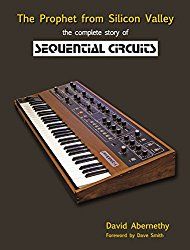
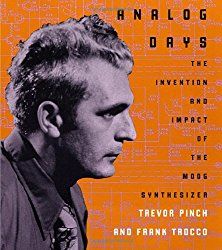
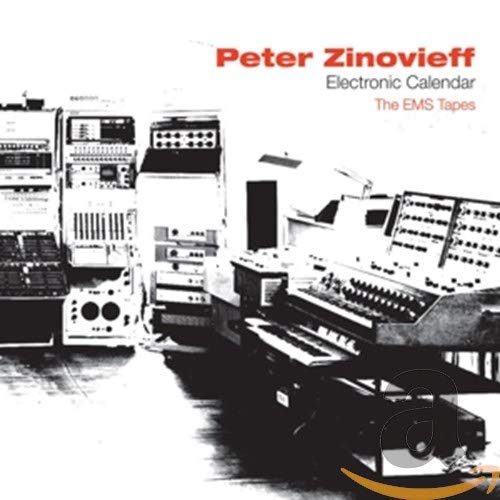
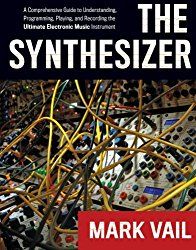
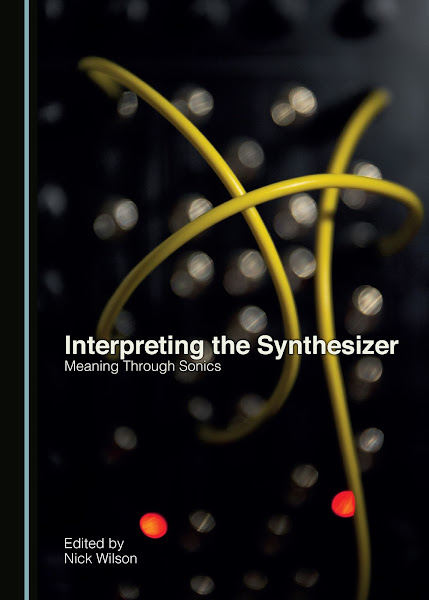
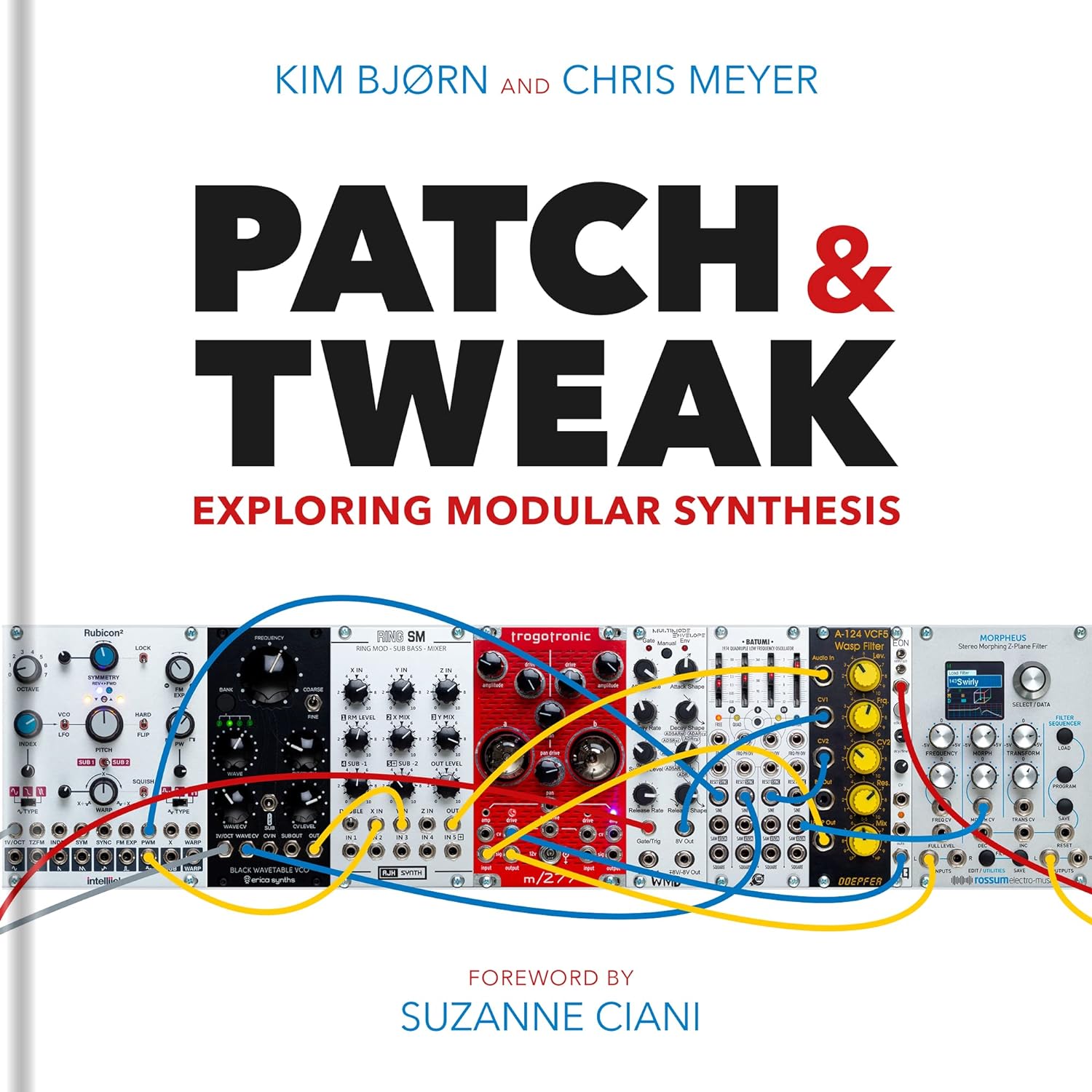

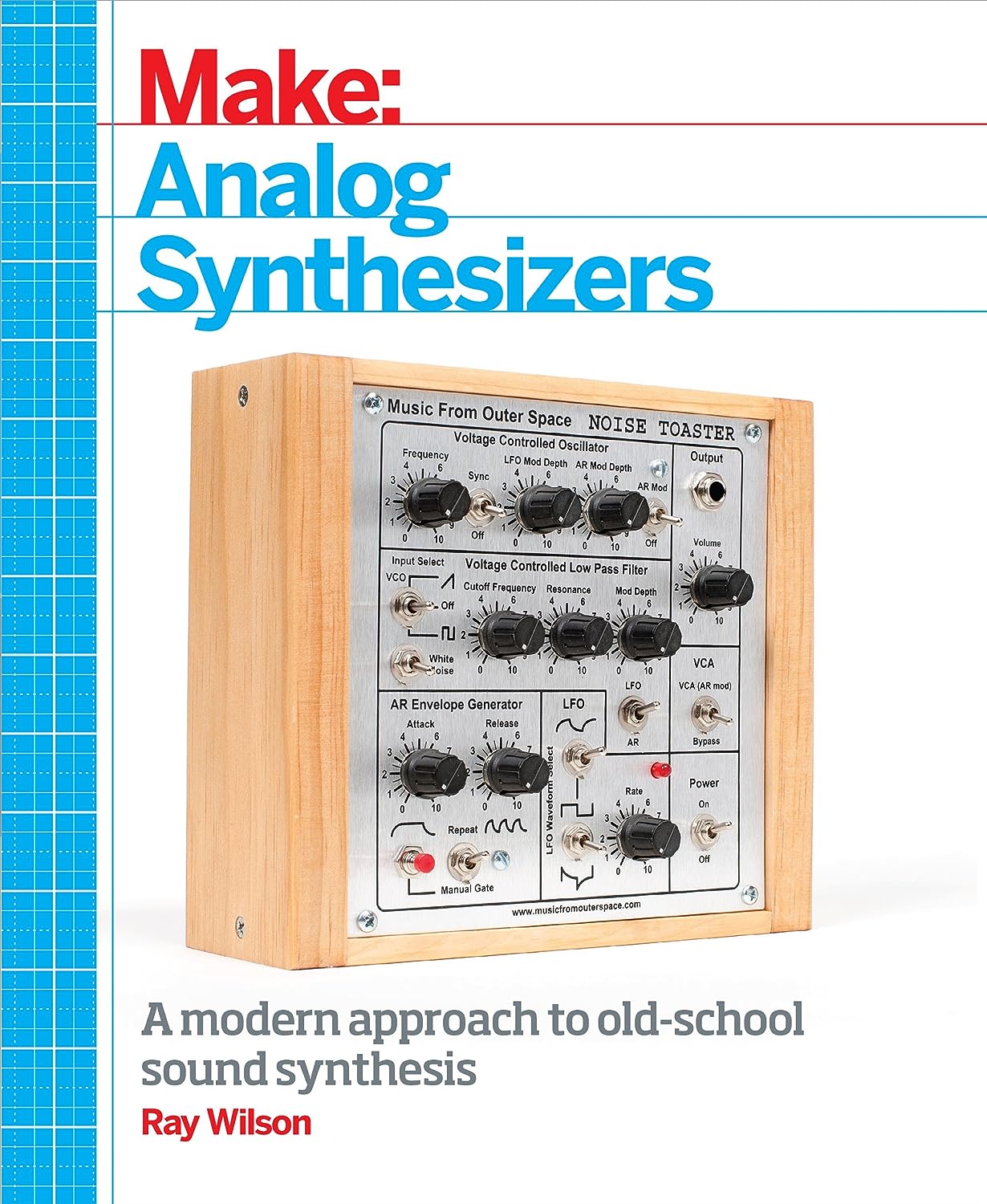
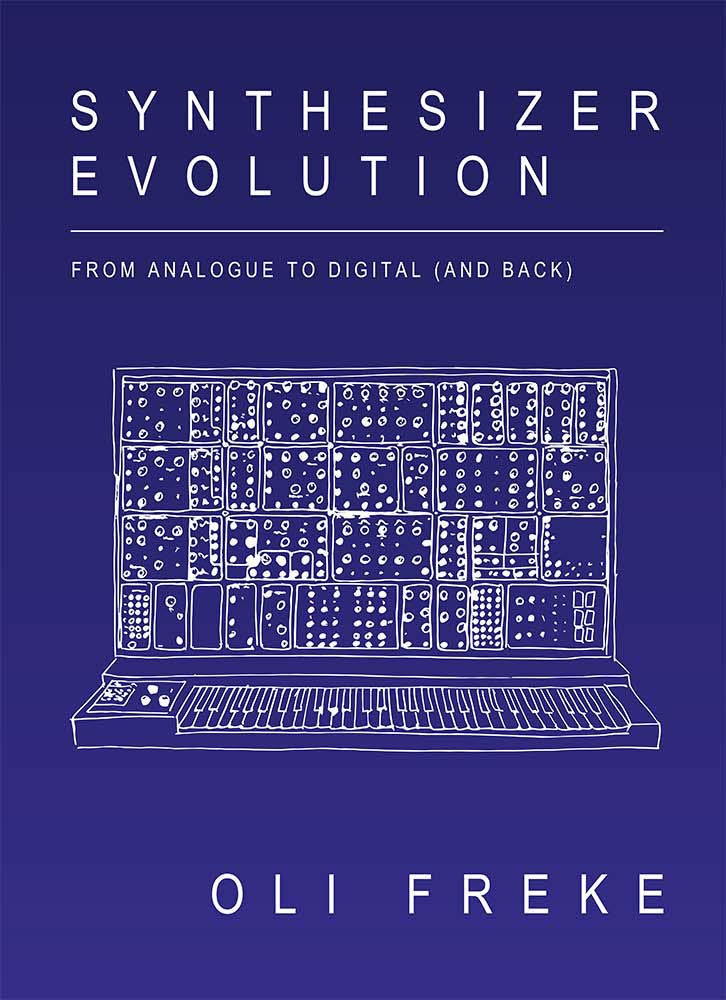
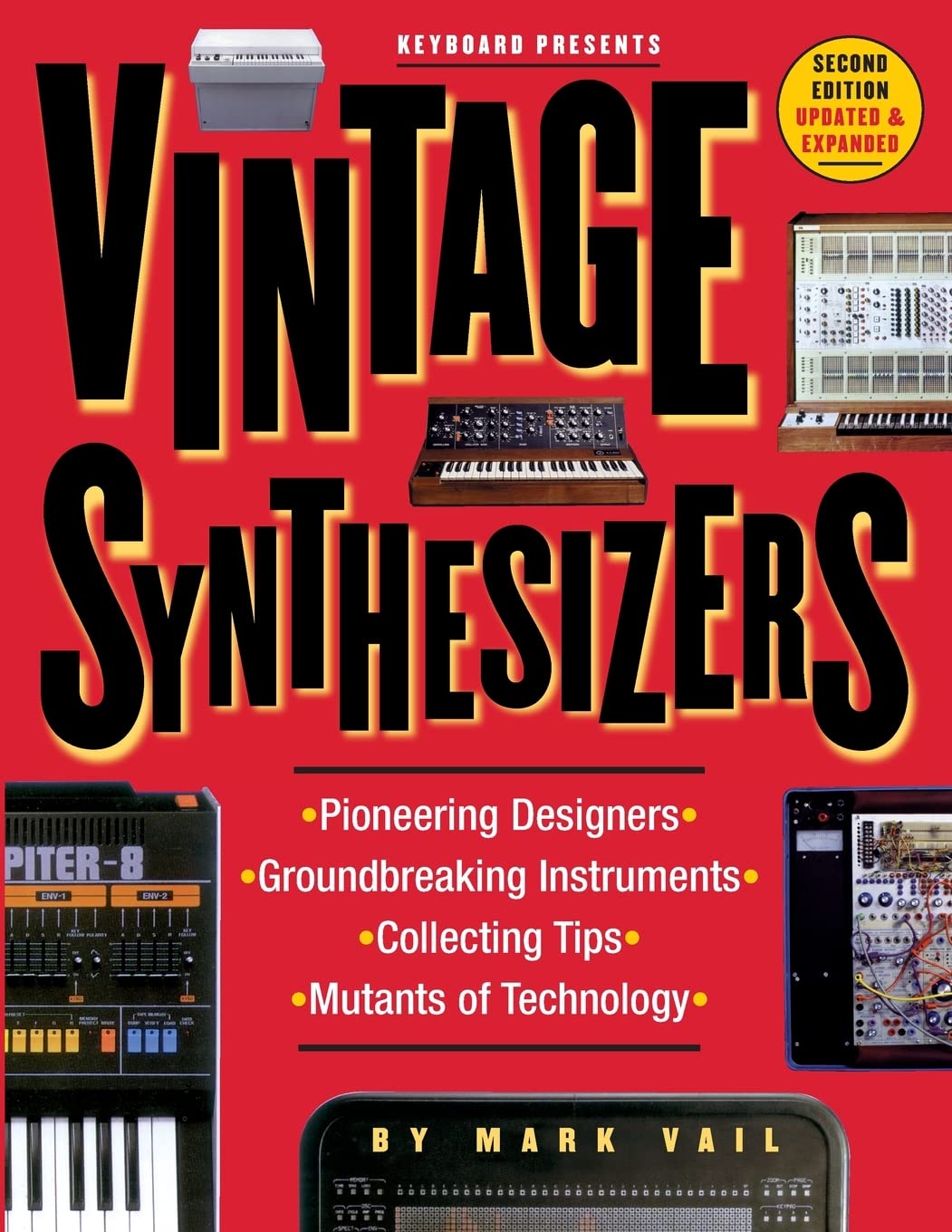
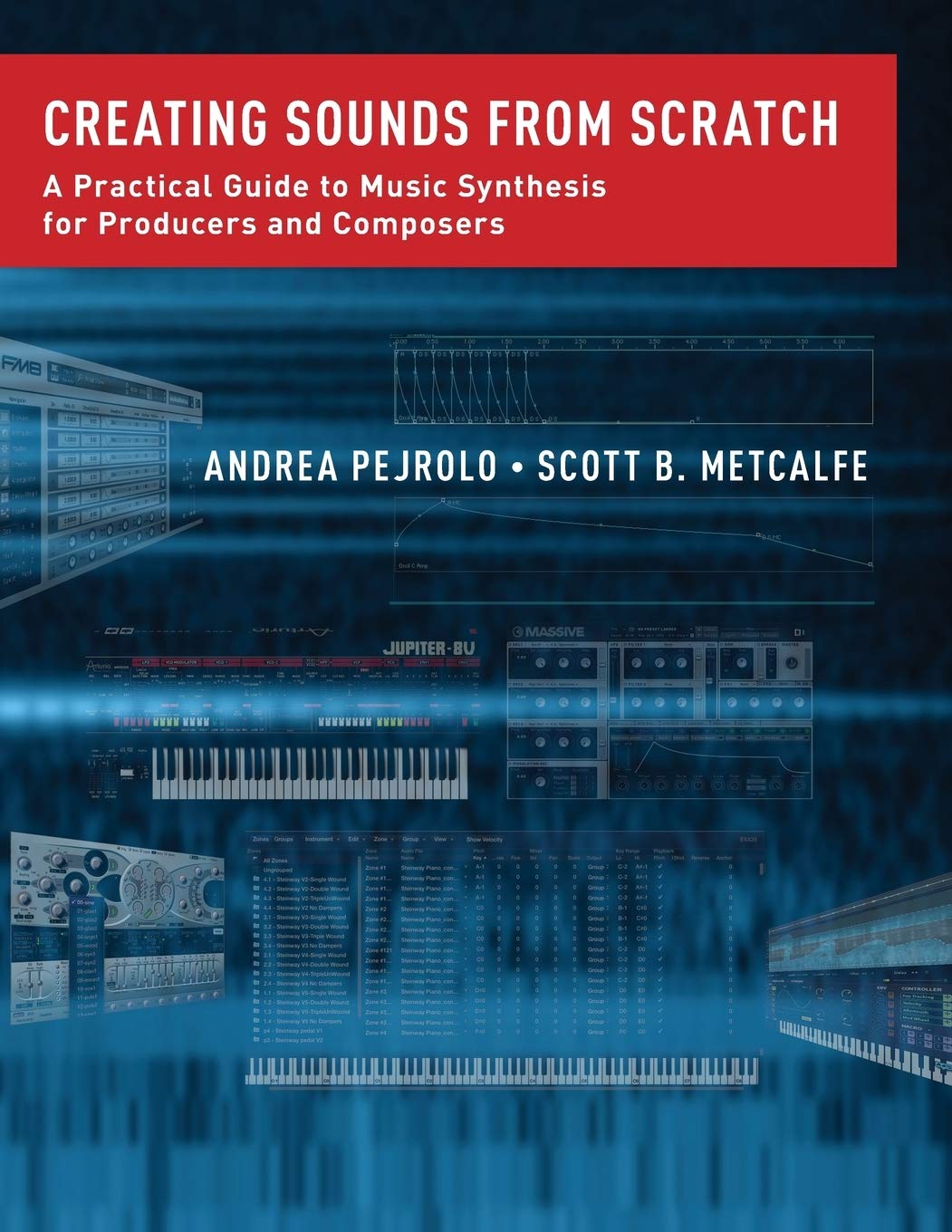
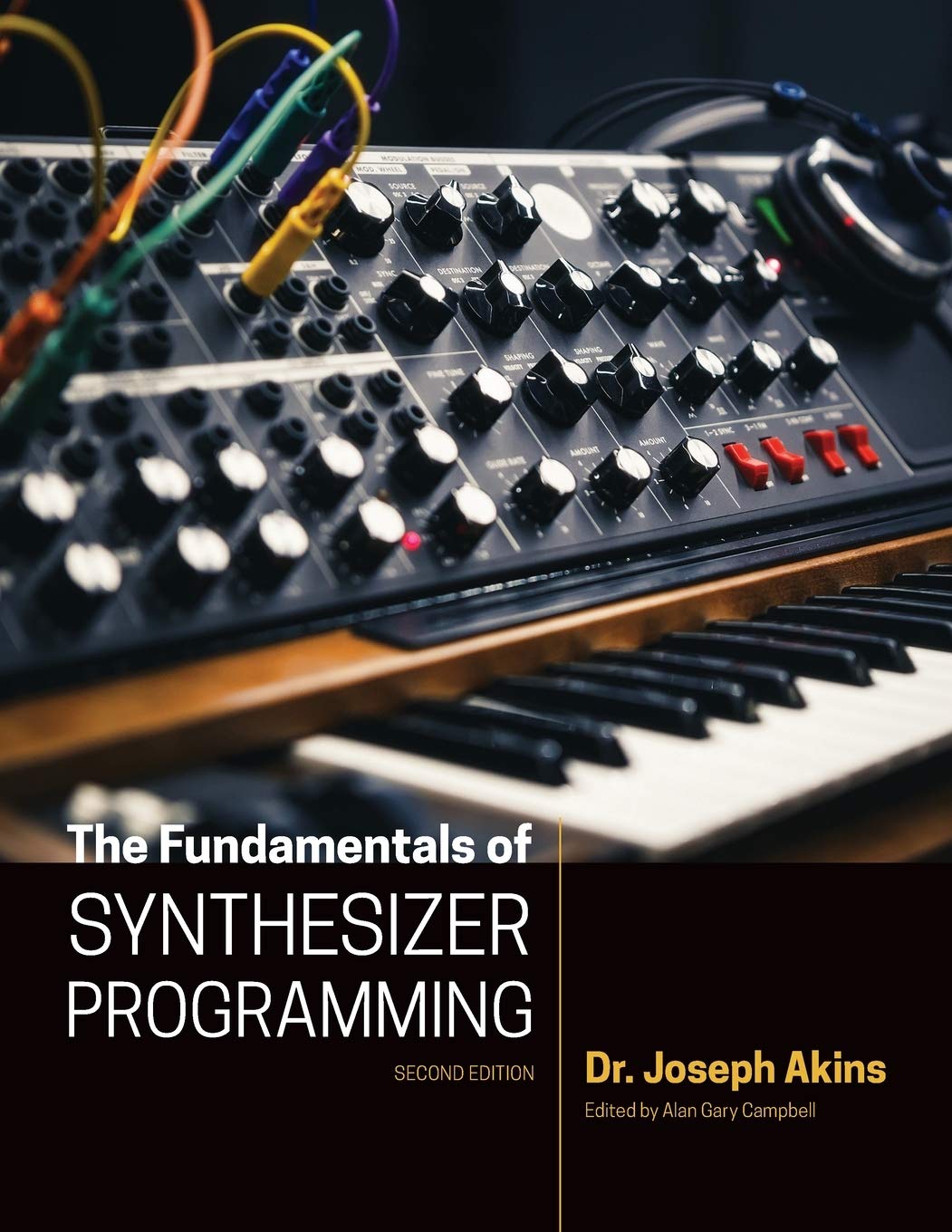

© Matrixsynth - All posts are presented here for informative, historical and educative purposes as applicable within fair use.
MATRIXSYNTH is supported by affiliate links that use cookies to track clickthroughs and sales. See the privacy policy for details.
MATRIXSYNTH - EVERYTHING SYNTH













© Matrixsynth - All posts are presented here for informative, historical and educative purposes as applicable within fair use.
MATRIXSYNTH is supported by affiliate links that use cookies to track clickthroughs and sales. See the privacy policy for details.
MATRIXSYNTH - EVERYTHING SYNTH





.jpg)



